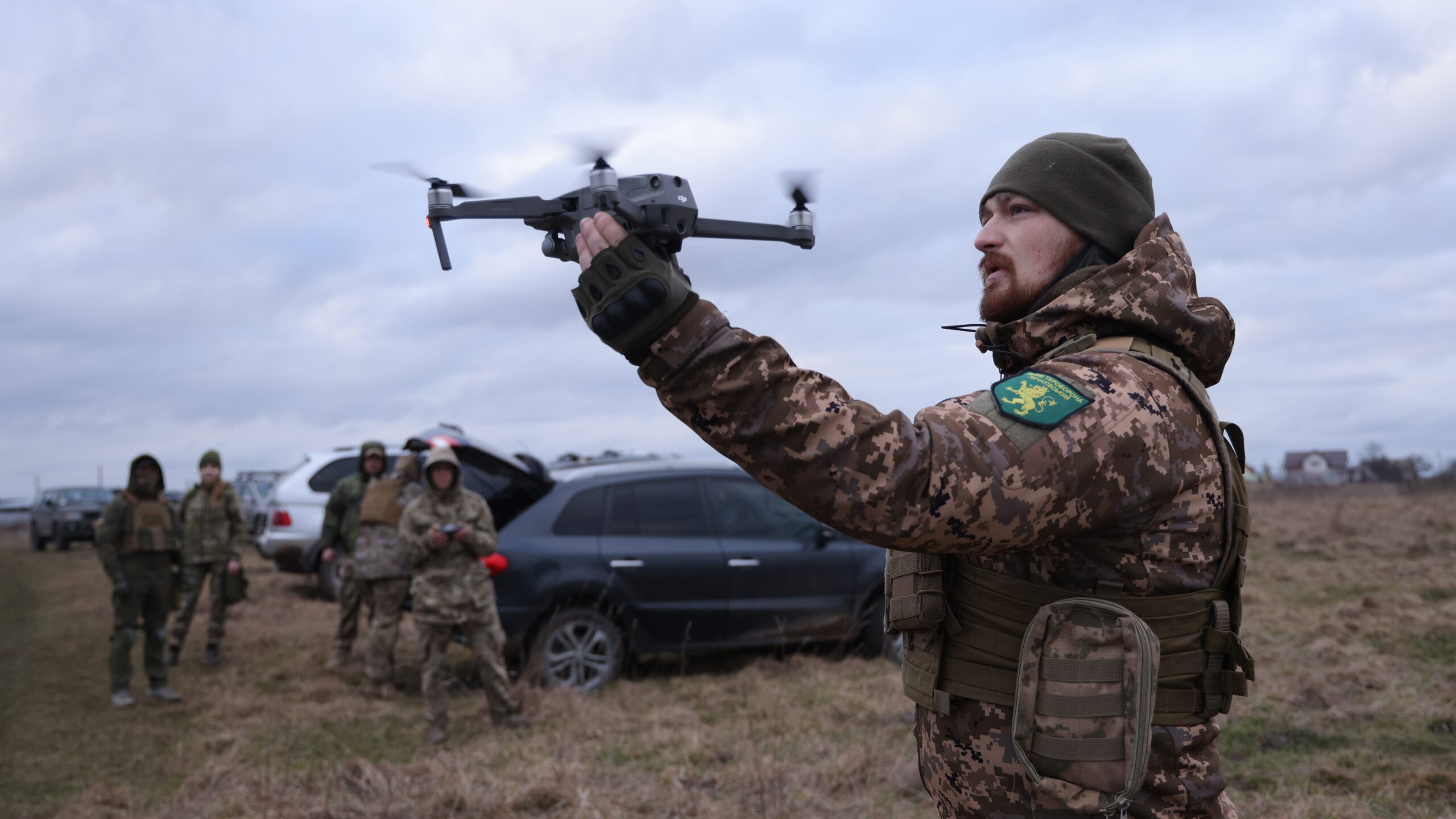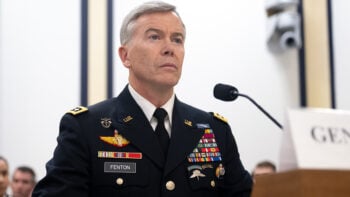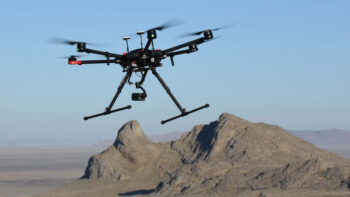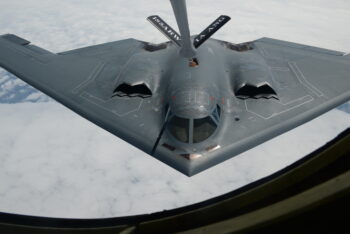
Ukrainians train with handheld drones. (Sean Gallup/Getty Images)
EDITOR’S NOTE 4/18/2024 at 11:25am ET: After some confusion at the White House, the Polish government clarified that it and Germany would be co-leading one of the initiatives. This report has been updated.
WASHINGTON — The United States was unable to offer up a new package of military equipment following today’s 18th Ukraine Defense Contact Group meeting but detailed two new coalitions — one focused on drones and another on armor.
“We have already formed capability coalitions focused on Ukraine’s Air Force, artillery, maritime security, ground-based air defense, demining and information technology, and today, Germany announced that it would lead the armor capability coalition and Latvia has announced that it will lead a drone coalition,” Assistant Secretary of Defense for International Security Affairs Celeste Wallander told reporters after the virtual meeting. (The Pentagon later clarified it was Poland, not Germany, leading the armor capabilities coalition.)
When it comes to that drone coalition, she noted that both Ukraine and Russia’s use of aerial drones is “quickly evolving” with both sides changing their tactics, techniques and procedures and adapting to the other side’s. So, the idea is to get ahead of the technology, production and operational curves, in part, by having Latvia head up a group to examine the multi-domain and multifunctional aspects in which Ukraine can use drones and defend against them.
“The Latvian-led coalition’s focus on providing drones to Ukraine is a strategic move, recognizing the critical role of unmanned aerial vehicles in modern warfare for surveillance, reconnaissance, and combat operations,” a defense official told Breaking Defense in a subsequent email. “This support is pivotal in bolstering Ukraine’s defense against ongoing aggression and aligns with the broader objective of maintaining its sovereignty.”
As for that Poland-led armor coalition, Wallander did not provide additional details on the mandate or deliverables. However, Kyiv has received an array of different combat vehicles including Marder infantry fighting vehicles and Leopard 1A5 tanks from Berlin, while Washington has sent Bradley fighting vehicles and M1 Abrams tanks. Long story short: The armor coalition could be eyeing a number of action items ranging from vehicle sustainment and upgrades to identifying new ways and systems to attack Russian combat vehicles.
In total, the Pentagon estimated that 50 countries participated in today’s Ukraine Defense Contact Group. The meeting marked the first time that the US was unable to pledge new weapon deliveries because Congress has not yet approved a supplemental spending bill that would enable the administration to replenish any weapons it pulls from its stocks to send to Ukraine.
“Without funding, we would not be able to match the pace that we have provided Ukraine with since the start of this conflict, and the conflict hasn’t died down. And in fact, the intensity remains high based on Russian activity,” Wallander said.
While Washington was unable to offer up any new military equipment today, NATO announced it had awarded a total of $1.2 billion to France’s Nexter Munitions and Germany’s Junghans Microtec for 155mm ammunition that can be launched from the Caesar and the German Panzerhaubitze 2000 (PzH 2000) self-propelled howitzers.
“Russia’s war in Ukraine has become a battle for ammunition so it is important that allies refill their own stocks, as we continue to support Ukraine,” NATO Secretary General Jens Stoltenberg said at a signing ceremony. “The NATO Support and Procurement Agency enables allies to pull together and pool their resources: To give them the weapons and ammunition we need to keep our countries safe.
Elbit’s new Red Sky air defense system goes public with first customer
The system includes a radar, as well as links to a 30mm gun and missile system for downing threats within ranges of seven kilometers and 15,000 feet, according to a company executive.


























